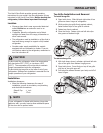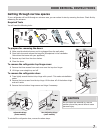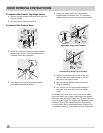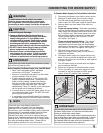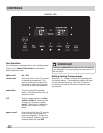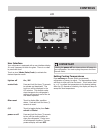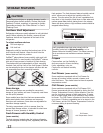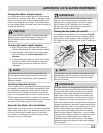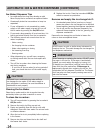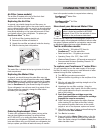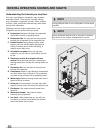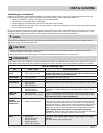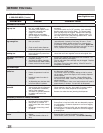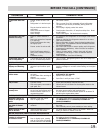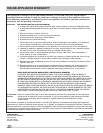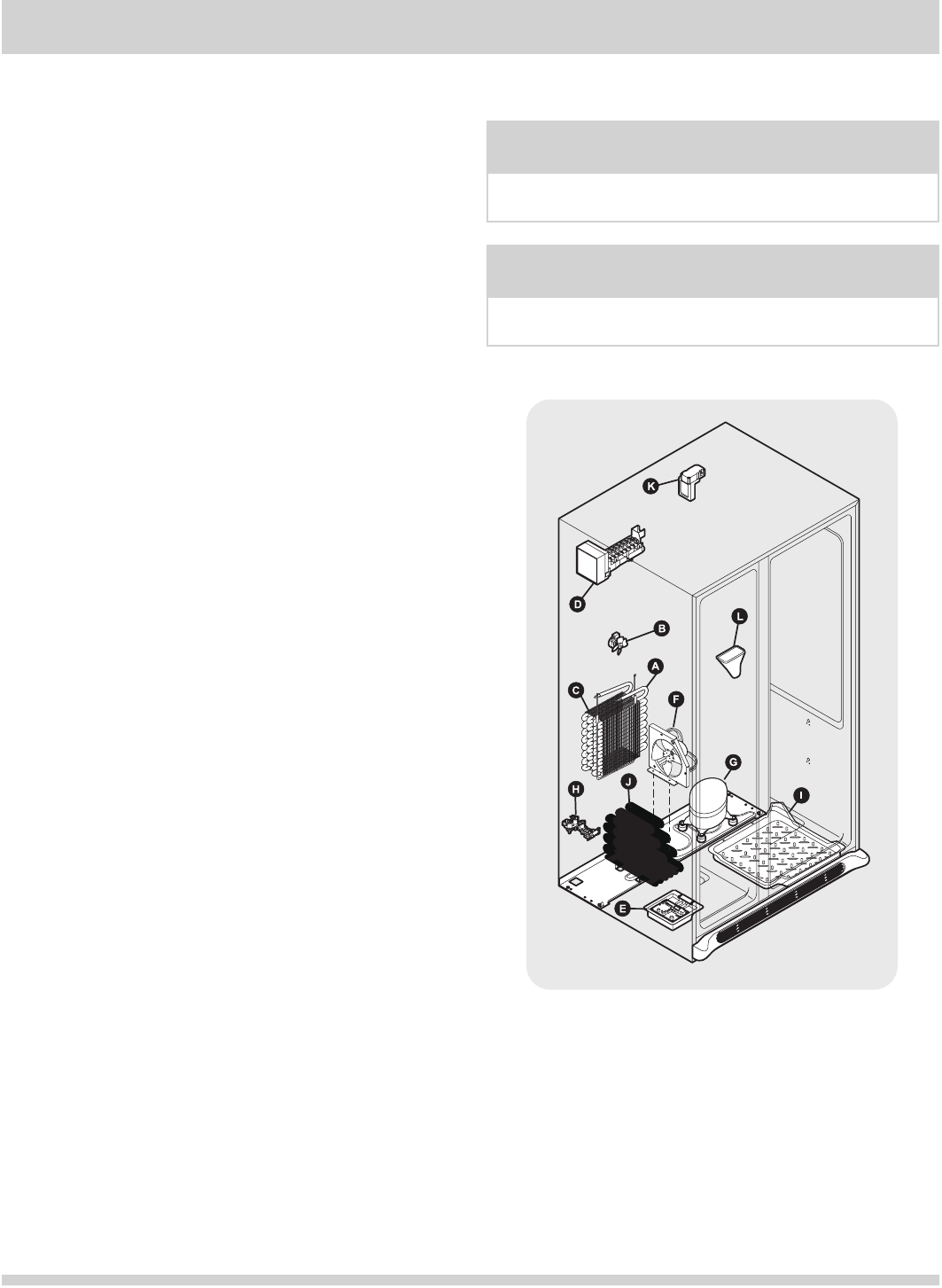
16
NOTE
Energyefcientfoaminyourrefrigeratorisnotasound
insulator.
Yournew,high-efciencyrefrigeratormayintroduce
unfamiliar sounds. These sounds normally indicate
your refrigerator is operating correctly. Some surfaces
onoors,walls,andkitchencabinetsmaymakethese
sounds more noticeable.
Following is a list of major components in your
refrigerator and the sounds they can cause:
A Refrigerant through the evaporator
may create a boiling or gurgling sound.
B You may hear air being forced
through the refrigerator by the evaporator fan.
During defrost cycles, water
dripping onto the defrost heater may cause a
hissing or sizzling sound. After defrosting, a
popping sound may occur.
D When ice has been
produced, you will hear ice cubes falling into the
ice bin.
E
These parts can produce a snapping or
clicking sound when turning the cooling system on
and off.
F You may hear air being forced
through the condenser.
G Modern,high-efciencycompressors
run much faster than in the past. The compressor
may have a high-pitched hum or pulsating sound.
Makes a buzzing sound each time it
openstolltheicemaker.
I (not removable) You may hear water
dripping into the drain pan during the defrost cycle.
J May create minimal sounds from
forced air.
K May produce a light
humming during operation.
L When dispensing ice, you will hear
a snapping or clicking sound when the solenoid
opens and closes the ice chute.
NOTE
During automatic defrost cycle, a red glow in the back
wall vents of your freezer compartment is normal.



